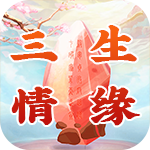1. 有關蒲公英的句子,優美的~ 最好有英文~ 最最好是押韻的,我寫歌詞
我是一株蒲公英
心里藏著憂傷
借著風的力量
在天空自由飛翔
風起的時候開始
風停的地方扎根
風中漂泊
風中彷徨
風中流浪
風中 不會再有熟悉的味道
不會再有曾經的花香
只是夢里載滿了希望
要生出一對翅膀
讓飄散在風中的淚水
快些在云端風干
你看
你看那曲水流觴
見證逝去的時光
守候著蒲公英的幻想
2. 求描寫蒲公英的優美句子
1、蒲公英那優美的小精靈,在天空中飛舞,如雪花般消失在了天際
2、一顆種子,一陣微風,就能營造一片蒲公英的燦爛。
3、蒲公英是我所見過的最奇特的花朵,并不是多麼奔放,也不是特別清秀,甚至吹散了只是惹人4、打噴嚏的毛茸茸的東西,可是在空中輕盈舞動的蒲公英,就是能觸動人心中最柔軟的地方。
5、蒲公英的種子靠風來傳播,只是借助那麼小小的力量就得以繁衍生息,它大概也是唯一能夠飛翔的花了吧。
6、平常蒲公英只是在每一個角落安靜的,謙卑的觀察世界,不管誰要帶它走都決不反抗,沒有用花刺和毒汁來防御別人,這是對世界多麼徹底的愛。
7、蒲公英也有激情迸發的時候,大片的蒲公英飛舞在空中,象會飛的雪花,象飄低的云朵,聯想大幅涌來,這是否是天女在微服出巡?
8、風越長久,蒲公英飛的越遠,無論是多麼偏僻的地方,多麼荒涼的地方,蒲公英都愿意留在那里,這是對世界多麼無私的愛。
9、蒲公英繁育的后代,各自起程,飄向更遠的地方,這是對世界多麼廣闊的愛。
就是這樣無窮無盡的奉獻,就是那樣飄翔在天際,不在乎世人的眼光是否在它們身上,只是到每一個角落去,把根留住。
10、安靜的等待,灑脫的飛翔,隨遇而安的氣度,安貧樂道的生活,蒲公英就象冰山下的火種,外表清冷孤傲,內在熱血奔騰。
11、只要有一陣風,蒲公英就會放開種子,隨之而去,不管它們的后代會到什麼地方,不會為后代設計要走的路,給它們翅膀,讓它們飛翔。
12、一陣風,一顆種子,一片蒲公英的輝煌。
13、不用聞蒲公英有多香,只要給它一陣微風,讓它自由飛翔。
3. 蒲公英的英文詩
蒲公英的種子 野外, 有位農家小姑娘; 輕輕地, 摘下一朵蒲公英。
農家小姑娘的心事, 是蒲公英的種子; 在那一籠白色的絨球里, 若隱若現地 躲藏 輕啜紅唇—— 把心事放飛 飛吧,飛吧,飛吧—— 縱使飛上青云 依舊扎根黃土地!The Seeds of DandelionBy YuanmeiIn the open field,There is a farmer girl;Gently, she picks A flower off a dandelion.The dream of the farmer girlIs like the seeds of the dandelion;Faintly, it shinesIn the white bobble.Taking a deep breath –She blows her dream out of her sweet lips.Fly, fly, and fly –No matter how high you fly,Still set your roots in the loessland!=======Loessland: the place where the dream rises from。.。
4. 【一百字左右關于蒲公英的語段】
田野里的蒲公英,在風的傳動中祖祖輩輩生活著.風一吹,一瓣瓣小雨傘四處飛舞,飄落到天涯海角,像四海為家的游子落地生根.蒲公英的飛翔是一個一個夢在瞬間的綻放,凝固了空氣,沿著空中的隧道傳播.風是一個匆匆的過客,邀請蒲公英去遠方旅行.從村莊到城市,墜入小溪流向河流,飛過天空,乘著云彩,飛出了我的思念,飛到了無邊無際的遠方.一個夢延續著一個夢.愛做夢的小女孩摘了一束蒲公英,向著的夢的方向吹出了許多許多的小小夢想.載著她的心愿,它們在飛啊飛啊,飛到夢的終點.一個夢的結束是另個一個夢的開始,同樣一個生命的結束也就孕育了另一個生命的誕生.飄落在天涯海角的蒲公英一代代地一次次地飄泊,傳動著一個個夢,也誕生著一個個新生命.。
5. 求英語作文——蒲公英
Taraxacum is a large genus of flowering plants in the family Asteraceae. They are native to Europe and Asia, and two species, T. officinale and T. erythrospermum, are found as weeds worldwide.The common name Dandelion is given to members of the genus and like other members of the Asteraceae family, they have very small flowers collected together into a composite flower head. Each single flower in a head is called a floret. Many Taraxacum species produce seeds asexually by apomixis, where the seeds are produced without pollination, resulting in offspring that are genetically identical to the parent plant. The genus is taxonomically complex, with some botanists dividing the group into numerous macrospecies, and many more microspecies: approximately 235 apomictic and polyploid microspecies have been recorded in Great Britain and Ireland.Some botanists take a much narrower view and only accept a total of about 60 species A number of species of Taraxacum are regarded as seed dispersed weeds or ruderals, especially the Common dandelion (T. officinale), which has been introduced over much of the temperate world as a lawn weed. After pollination and flowering is finished, the dandelion flower dries out for a day or two and then the seed-bearing parachutes expand and lift out of the dried flower head. The dried part of the flower drops off and the parachute ball opens into a full sphere. The parachute drops off when the seed strikes an obstacle. Often dandelions are observed growing in crevices near a wall; when the blowing fruits hit the wall, the feathery pappi comes off, dropping the dandelion seeds to the base of the wall or into a crevice. After the seed is released, the parachutes lose their feathered structure and take on a fuzzy, cotton-like appearance, often called "dandelion snow".Dandelions are used as food plants by the larvae of some species of Lepidoptera (butterflies and moths). See List of Lepidoptera that feed on dandelions. Away from their native regions, some dandelion species have become established in the Americas, Australia, and New Zealand, and are now common throughout all temperate regions, Taraxacum officinale has become a nearly world wide weed. Origin of the name The English name dandelion is a corruption of the French dent de lion meaning "lion's tooth", referring to the coarsely toothed leaves. The names of the plant have the same meaning in several other European languages, such as the Italian dente di leone, Spanish diente de león, Portuguese dente-de-leão, Norwegian Løvetann, Danish Løvetand and German Löwenzahn. In modern French the plant is named pissenlit, which means "piss in bed", apparently referring to its diuretic properties[citation needed]. Likewise, "pissabeds" is an English folk-name for this plant, as is piscialletto in Italian and the Spanish meacamas.[citation needed] In various north-eastern Italian dialects the plant is known as pisacan ("dog pisses"), referring to how common they are found at the side of pavements[citation needed]. In several European languages the plant, or at least its parachute ball stage, is named after the popular children's pastime of blowing the parachutes off the stalk: Pusteblume (German for "blowing flower"), soffione (Italian for "blowing"; in some northern Italian dialects), dmuchawiec (Polish, derived from the verb "blow"), одуванчик (Russian, derived from the verb "blow").[citation needed] In other languages the plant is named after the white sap found in its stem, e.g. Mlecz (derived from the Polish word for "milk"), kutyatej (Hungarian for "dog milk"), маслачак (derived from the Serbian word маслац, meaning "butter")).[citation needed] Also the Lithuanian name kiaulpienė can be translated as "sow milk"[citation needed], and similarly, in Latvian it is called 'pienene, the word being derived from piens - milk[citation needed]. The alternative Hungarian name gyermekláncfű ("child's chain grass"), refers to the habit of children to pick dandelions, remove the flowers, and make links out of the stems by "plugging" the narrow top end of the stem into the wider bottom end.[citation needed] In Turkish the dandelion is called karahindiba meaning "black endive".[citation needed] In Swedish, it is called maskros ("worm rose", named after the small insects (thrips) usually present in the flowers In Finnish and Estonian, it is called voikukka and võilill, respectively, meaning "butter flower", referring to its buttery colour.[citation needed] In Dutch it is called paardebloem, meaning "horse-flower".[citation needed] In 。
6. 描寫蒲公英的優美句子
【蒲公英做了一個夢】
(二首)
一
蒲公英,蒲公英
蒲公英做了一個夢
夢見它變成一顆星
一顆最亮的星
一顆最美的星
閃在銀河中
早上的風來撈珍珠
撈起了星星
撈起了星星做別針
做呀做
做成一根銀別針
送給太陽吧
太陽好臉紅
為什麼?為什麼?
也許明天要定親
也許明天要定親
太陽戴上了銀別針
亮晶晶,亮晶晶
誰也看不清
呀呀呀
蒲公英做了一個夢
二
蒲公英,蒲公英
蒲公英做了一個夢
夢見它變成了一朵云
一片最白的云
一片最輕的云
飄在藍天中
晚上的風來采棉花
采到了白云
采到了白云做紗裙
做呀做
做成了一條長紗裙
送給月亮吧
月亮愛干凈
為什麼?為什麼?
可能今天要結婚
可能今天要結婚
月亮換上了長紗裙
迷蒙蒙,迷蒙蒙
誰也看不清
嗯嗯嗯
蒲公英做了一個夢
【出處】:
中華詩詞-現當代-顧城


















